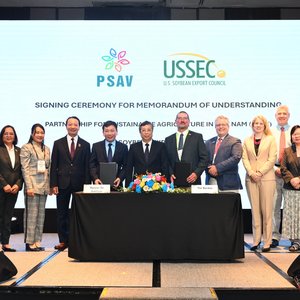Salmofood expanded its Aquaculture Experimental Center (CEA), as part of the company's growth strategy and to continue to invest in R&D.
Nine new ponds of 9 m3 were added to the previous one that has 58 m3 in total. This new infrastructure will reach harvest weight sizes and thus be able to experiment with the entire salmon production cycle. With this experimental center, Salmofood consolidates the aquaculture market and provides a rapid response to dynamic market changes. "We want to contribute with our grain of sand to improve feed efficiency to optimize the production performance and costs of salmon farming," said Salmofood commercial manager, Ernesto Passalacqua.
The new room has digestibility modules with RAS systems and photoperiod control that will allow in vivo digestibility analysis of new ingredients. Likewise, it will focus on evaluating the performance of diets with the ingredients that show the best digestibility. Palatability tests will also be carried out to evaluate the effect of different additives. “This is the 4th CEA that Vitapro builds, adding value to an increasingly globalized industry. Today we are mainly focused on digestibility tests, functional additives and develop diets that improve the fish performance,” said Rodrigo Sánchez, Head of R&D and leader of the Experimental Center. Through this expansion, Salmofood anticipates the needs of the market to provide its customers with a complete portfolio of products using the best formulation strategy and also providing the nutritional requirements of salmon.
Located in Quillaipe (Puerto Montt, Los Lagos region) and opened in November 2018, the CEA of Salmofood aims to offer its services to producers and suppliers of the salmon industry, so that they can perform different types of tests that allow them to validate techniques, procedures and new products.











